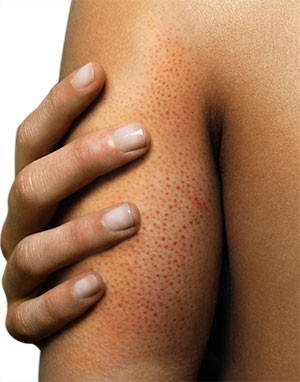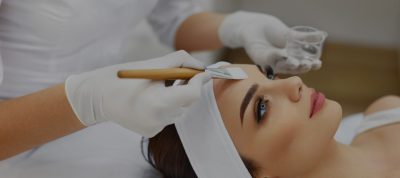 Everyone wants smooth, healthy skin. If you’re bothered by pesky little bumps that feel rough to the touch, you’re not alone. Those bumps might be keratosis pilaris — check with your doctor or dermatologist to be sure. While the bumps are harmless and painless, they can be difficult to treat.
Everyone wants smooth, healthy skin. If you’re bothered by pesky little bumps that feel rough to the touch, you’re not alone. Those bumps might be keratosis pilaris — check with your doctor or dermatologist to be sure. While the bumps are harmless and painless, they can be difficult to treat.
This condition is common in children and young adults and can sometimes resolve itself by early adulthood. It is important to have a skin specialist or dermatologist examine your skin to make a concise diagnosis.
If you run your hand along the back of your arm and it has a bumpy or rough texture, you could have keratosis pilaris. The bumps are often in patches and can resemble a “goose-like flesh” or “chicken skin”. They appear white and are somewhat hard to notice from a quick glance. They are most commonly found on the back of your arms, although they can also be found on the cheeks, thighs, and buttocks. They can become red, but are not painful, and are generally not itchy or cause any kind of discomfort.
These bumps can also become inflamed, and can scar if they are picked at or scratched. Keratosis pilaris is caused from the build-up of keratin under the skin’s surface. The keratin develops a scaly plug that blocks the hair follicle at the opening. The result is bumpy skin.
If you have keratosis pilaris, you want to know how to get rid of the problem. While keratosis pilaris is not curable, you can lessen the appearance and signs. It can be challenging to treat, but you can usually reduce the appearance of the bumps and redness over time.
A topical retinoid therapy using Vitamin A can promote cell turnover and keep the follicle from getting plugged. A topical exfoliant or medicated cream containing alpha-hydroxy acids and moisturizers can soften the dried out skin and remove dead skin cells. Green tea also helps reduce the visible redness and bumps associated with irritated dry skin and keratosis pilaris.
Being consistent with your skin care will help keep your keratosis pilaris under control and replenish a smooth skin finish. Before trying medical grade products to treat this skin disorder, I would definitely recommend trying just a simple exfoliating scrub; this alone can do wonders for your skin tone and texture.
When using an exfoliating scrub, apply generously to the affected area and rub in with your hands in an upward motion to slough away dead skins cells more effectively. Do this one to two times weekly and apply a moisturizer after to keep the skin hydrated.
Student resources











